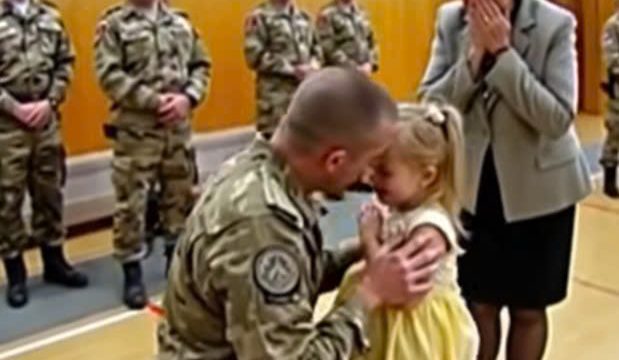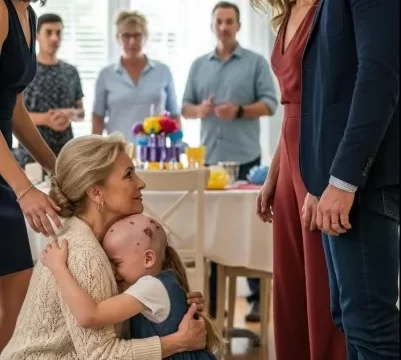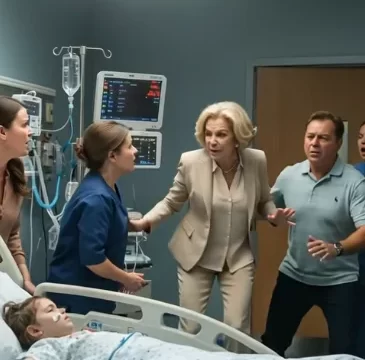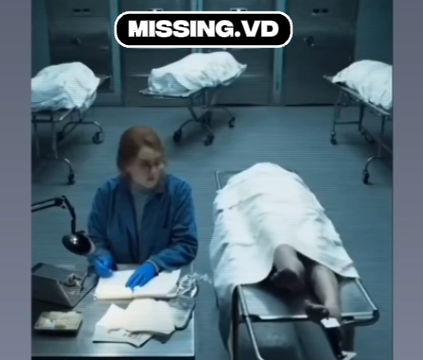It was supposed to be just another ordinary morning—a day like any other filled with laughter, hugs, and the daily routine of parents dropping off their little ones at daycare before heading to work. But on September 28, 2025, that sense of normalcy was shattered when a three-year-old child suddenly collapsed at a local daycare center, leaving everyone in shock and disbelief. What started as a peaceful morning turned into every parent’s worst nightmare—a tragedy that no one could have predicted, and whose cause would leave even medical professionals stunned.
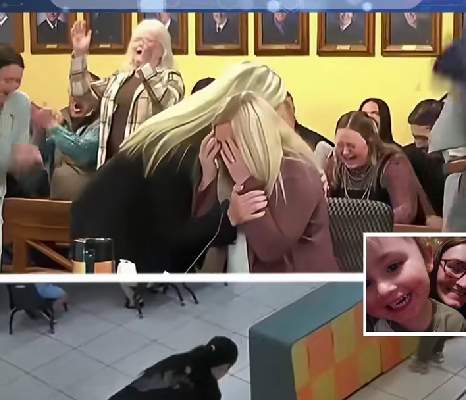
The daycare had been buzzing with activity that morning. Parents hurriedly exchanged goodbyes, promising to pick their children up later, while caregivers guided excited toddlers to play areas and classrooms. Everything seemed perfectly normal—until hours later, chaos erupted. Staff members discovered that one of the children had collapsed without warning. Emergency calls were made in a panic, and within minutes, paramedics arrived to find caregivers performing CPR, desperately trying to save the little one’s life. Despite every effort to revive the child, the tragedy proved irreversible.
Witnesses described the scene as heartbreaking and chaotic. When parents were notified, many rushed back, only to be met with police cars and ambulances surrounding the building. Some broke down sobbing, while others clutched their own children tightly, unable to imagine the pain of losing a child so suddenly. “We never thought something like this could happen here,” one caregiver said tearfully. “We do everything we can to keep these kids safe. This was just… unimaginable.”
As the investigation unfolded, the community anxiously awaited answers. Rumors swirled—was it an accident, a health emergency, or something else entirely? Authorities soon revealed the truth: the child’s death was caused by a rare and sudden medical condition, so uncommon that it often goes undetected until it’s too late. Pediatric specialists explained that such hidden conditions can remain silent, showing little to no symptoms before triggering a fatal event. The revelation offered clarity, but no comfort, leaving the family and daycare staff to grapple with grief and unanswered “what ifs.”
The daycare center, once a place filled with energy and laughter, has since fallen into an eerie silence. Staff members—many of whom had cared for the child since infancy—were left devastated. “These kids aren’t just children we look after; they’re part of our family,” one teacher shared. “We celebrate their birthdays, we teach them their first songs… losing one feels like losing one of our own.” The emotional toll has been immense, with counselors brought in to support both staff and families affected by the tragedy.
Meanwhile, the child’s family has been surrounded by an outpouring of compassion from neighbors, friends, and even strangers. Candlelight vigils have been held in memory of their little one, and online fundraisers have been set up to support the grieving parents. Messages of love and condolences continue to flood social media, with many expressing how deeply the story has touched their hearts. “No parent should ever have to endure this kind of loss,” one message read. “May they find strength in knowing their child’s spirit lives on in the love around them.”
Although the tragedy was medical in nature and not the result of negligence, it has sparked serious discussions about daycare preparedness for medical emergencies. Parents and policymakers alike are now questioning whether early childhood centers are truly equipped to respond to sudden health crises. Experts have urged facilities to ensure that all staff are trained in CPR and first aid and that emergency protocols are regularly reviewed and rehearsed. “Seconds can make all the difference,” said one pediatric emergency specialist. “The more prepared caregivers are, the better the chances of saving a life when the unexpected happens.”
Local officials have since announced plans to review safety and health procedures across daycare centers in the region, emphasizing the need for readiness even in rare scenarios. Some parents have started requesting detailed information about medical training and response capabilities before enrolling their children. “We trust daycare providers with our most precious treasures,” one mother explained. “It’s not about blame—it’s about making sure this never happens again.”
For the small community where the incident occurred, the loss has left an indelible mark. The child’s laughter, once echoing through playrooms and hallways, now lingers only in memory. Teachers still pause when passing the child’s empty cubby, a painful reminder of how fragile life can be. “We keep expecting to see that bright smile,” one caregiver said softly. “It doesn’t feel real.”
The family, though crushed by grief, has found solace in the support surrounding them. Friends describe them as deeply loving parents who poured their hearts into raising their child. They’ve chosen to focus on celebrating their little one’s short but beautiful life, sharing stories, photos, and memories that remind them of happier times. Their resilience has become a source of inspiration for many who followed their story.
In the days since the tragedy, parents across the country have found themselves reflecting more deeply on their own daily routines. The quick goodbyes, the rushed mornings—moments that often feel ordinary—now carry new weight. This heartbreaking story serves as a powerful reminder to slow down, to hold children a little tighter, and to never take another day for granted.
While no amount of explanation can ease the sorrow, the loss has also shed light on a vital truth: awareness and preparedness matter. Pediatric health professionals emphasize that even rare conditions deserve attention and understanding. With better screening, education, and readiness, similar tragedies might one day be prevented.
The daycare, once filled with laughter and song, now stands as both a place of mourning and a symbol of hope. Its staff has vowed to continue their mission of caring for children with even greater dedication, in honor of the life that was lost. “He’ll always be part of us,” one caregiver said. “Every smile, every hug from another child will remind us why we do what we do.”
In the end, the tragedy has united a community in shared grief and love. It’s a story that touches the deepest fears of every parent and the deepest compassion of every caregiver. Though caused by a rare medical complication, it has sparked a larger movement toward awareness, training, and preparedness that could one day save another child’s life.
The loss of a toddler is a heartbreak no family should ever endure. Yet in the shadow of sorrow, this community has shown that even the deepest pain can inspire acts of kindness, resilience, and change. As the parents hold onto the precious memories of their child, they remind us all of a timeless truth—life is fragile, childhood is fleeting, and every moment we share is a gift beyond measure.
